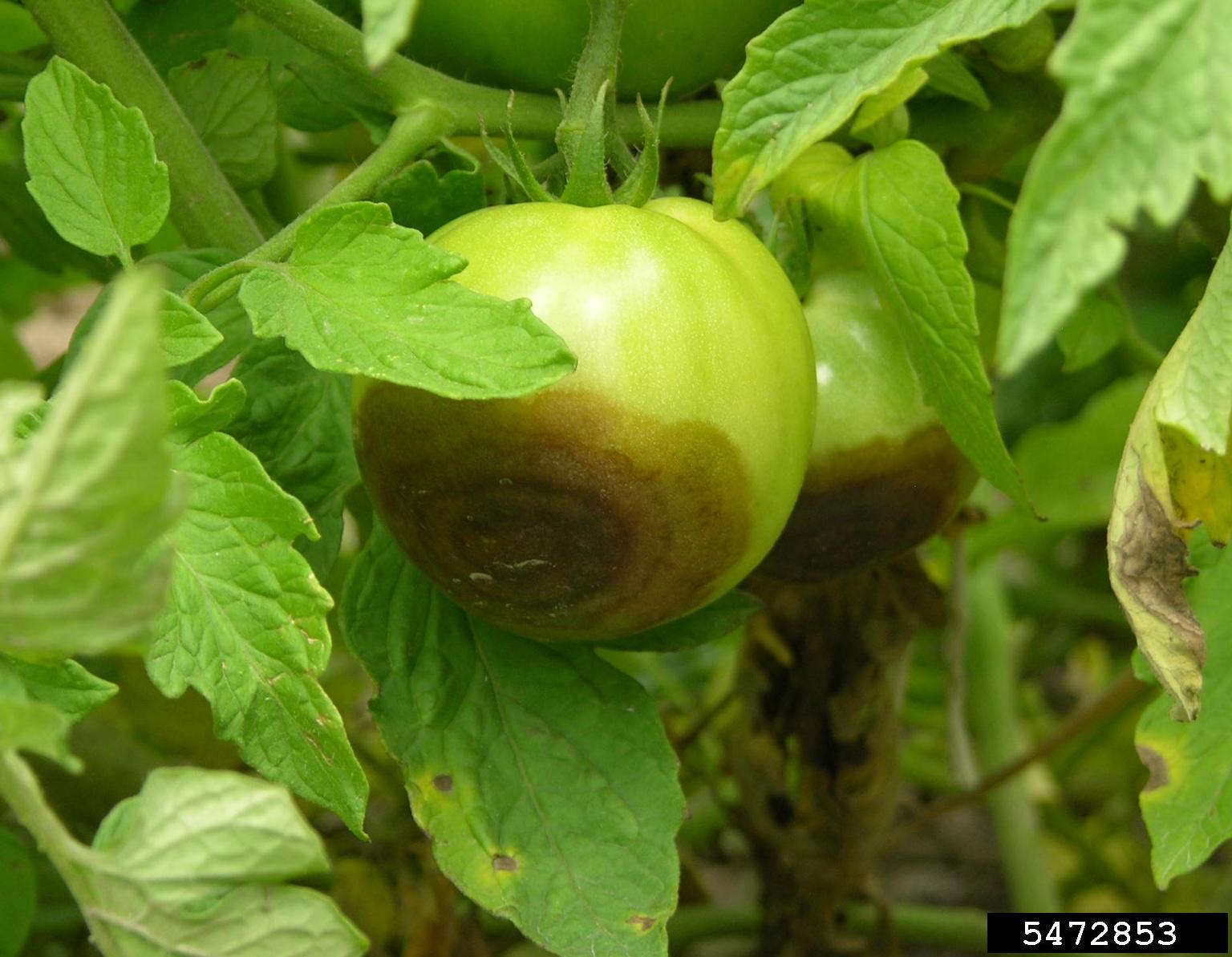Buckeye Rot Of Tomato Plants: How To Treat Tomatoes With Buckeye Rot

Do your tomatoes have large brownish spots with concentric rings that resemble a buckeye? Are these spots near the blossom end or where they contact the soil? If so, then your plants may have buckeye rot of tomato, a fruit rotting disease caused by a soil borne fungus.
What is Tomato Buckeye Rot?
Buckeye rot on tomatoes is caused by three species of Phytophthora: P. capsici, P. drechsleri and P. nicotiana var. parasitica. Phytophthora species vary by tomato-producing region. Tomatoes with buckeye rot most commonly occur in the southeast and south central regions of the United States. Tomato buckeye rot typically follows prolonged warm, wet conditions and the disease is important wherever there is high humidity and abundant soil moisture. The disease induces fruit rot of tomato, pepper and eggplant. The fungus is introduced through infected seeds or transplants, or from volunteer plants or the previous crop. It attacks both green and ripe fruit and can spread by surface water and splashing rains. Fungal spores are produced when the soil is wet and above 65°F. (18 C.). Temperatures between 75 and 86°F. (24-30 C.) are ideal for disease development. Tomato buckeye rot begins as a small brownish, water-soaked spot that usually appears at the point of contact between fruit and soil. At first, it is firm and smooth. The spot increases in size and develops the characteristic alternating rings of light and brown bands. The lesions become rough and sunken at the margins and may produce a white, cottony fungal growth.
Treating Buckeye Rot on Tomatoes
Let’s look at a few strategies to preventing and controlling the symptoms of buckeye rot on tomatoes. Ensure proper soil drainage. If you have clay soil, amend with organic matter. Soil that does not drain properly between waterings is more vulnerable to fungal infections. Avoid soil compaction and disinfect heavily infested soils with a soil fumigation. Planting in raised beds is a good way to help avoid either of these issues. Prevent tomato to soil contact with proper staking and/or trellising. Also add mulch (plastic, straw, etc.) all around the plant to reduce fruit/soil contact. Crop rotation, changing the location in your garden where tomatoes are grown, is another good idea. Apply fungicides that contain chlorothalonil, maneb, mancozeb, or metalaxyl as their active ingredient on a regularly scheduled spray program. (Follow the manufacturer’s label directions and restrictions.)
Gardening tips, videos, info and more delivered right to your inbox!
Sign up for the Gardening Know How newsletter today and receive a free copy of our e-book "How to Grow Delicious Tomatoes".
-
 How To Grow Seeds Quickly: 8 Expert Tricks For Fast Flowers & Crops
How To Grow Seeds Quickly: 8 Expert Tricks For Fast Flowers & CropsIt's never too late to start growing! Jump-start your flower or vegetable garden with these pro tips and tricks for germinating seeds in record time.
By Amy Grant
-
 8 Perfect Flowers To Plant With Tomatoes To Boost Yields & Banish Pests
8 Perfect Flowers To Plant With Tomatoes To Boost Yields & Banish PestsDon’t forget flowers when choosing companion plants for your tomato beds or pots. These pretty, fragrant blooms add beauty but are also highly beneficial.
By Mary Ellen Ellis